
Issue 047
March 2009
Mick Bower takes us through the 12 greatest things about mixed martial arts.
1 The cage
“Two men enter, one man leaves!” Actually, three men enter (one of them an official, entrusted with enforcing rules and ensuring the well-being of the other two). Also, the same number always leave, in my experience. Anyway, enough of the nit-picking. The cage separates our sport from all others.
Before the action begins the cage door clicks shut. This physical barrier enhances the drama. There’s no easy way out for the fighters. Deep down, you know that the fence is there for safety reasons, but the human mind is a complex thing. Show it an enclosed chain-link fence and alarm bells go off. In everyday life they exist to keep the bad guys away and the animals in. The cage spells danger.
Haters point at the cage to back up their arguments against the sport. For them it is a symbol of savagery, a place that contains barbaric brutality, and, while we know that we’re watching dedicated athletes taking part in a sporting challenge, the cage pushes all the same psychological buttons for us. The cage enhances the experience. The cage defines the sport. Like it or not, this is cage fighting.
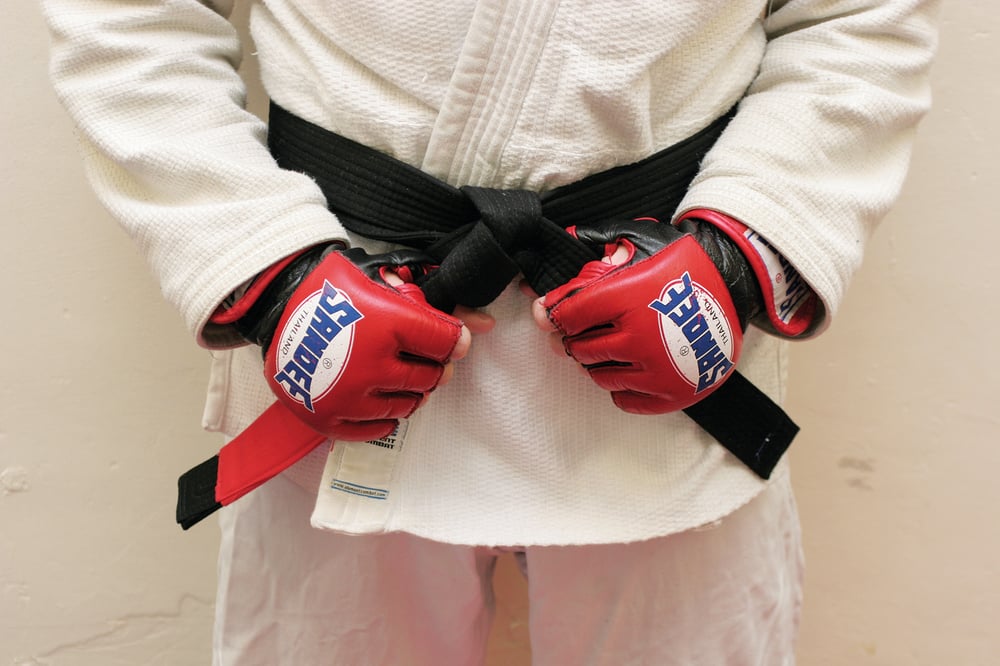
2 Exposes the flaws of traditional martial arts
From an early age, you’re told that violence is not the answer to life’s problems. This is true unless the question is ‘what is the best way to fight?’ For years, people argued the merits of the individual martial arts. Luckily, someone came up with a solution: let’s have a fight.
Once the dust settled, after those heady early years of MMA competition, there was no clear winner. The boxers and wrestlers looked smug. The Brazilians and Thai’s felt their years of work had been vindicated. The big losers were the guys in the pyjamas. Traditional martial arts were exposed. Their attachment to dogma and lack of realistic competition had left them light years behind their full-contact cousins.
The old arts still have a place. They can instil discipline, speed, and sharpness. Unfortunately, you need to move on if you want to win a one-on-one fight. If you are ever likely to be attacked by multiple opponents who assault you on cue and are frightened of guys who pose like cartoon cats, stick with it.
Freed from stifling rules, former judokas and karate practitioners have found success in MMA, but only after adding techniques from other styles to their game. The concept of staying within one monolithic fighting system is redundant.
One day, I may be proved wrong. A ninja may clear out his division using an arsenal of one-inch punches, Vulcan nerve-pinches, and various other kick ass moves – but I wouldn’t bet on it.
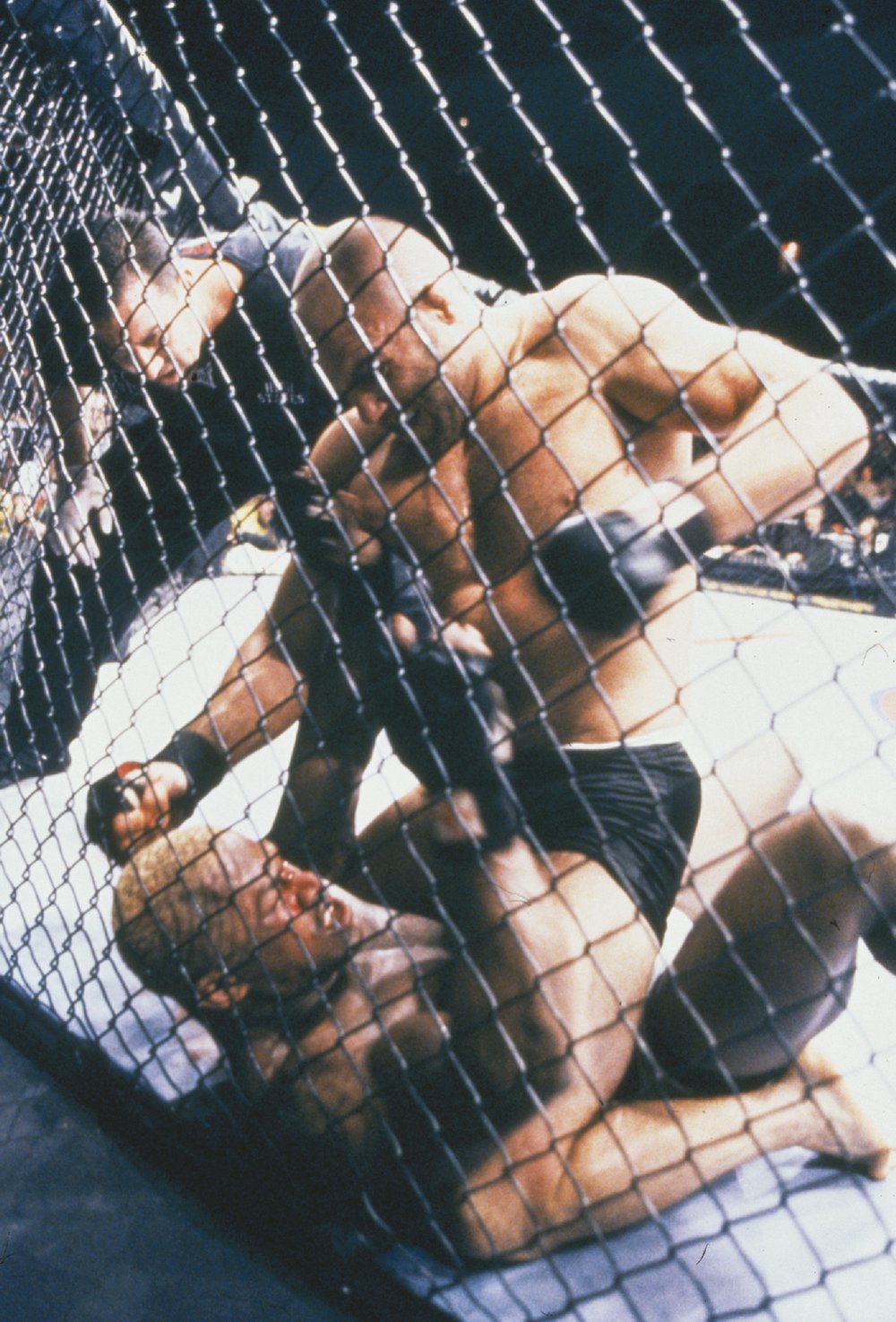
3 Evolution
The first UFC was set up to demonstrate the superiority of Gracie jiu-jitsu. The family picked little Royce to spread the word. Punching was out and choking was in. Get those big guys down and they haven’t got a clue. Turn off the oxygen and the fight’s over. Brazilian jiu-jitsu was king.
Then the wrestlers turned up, nicked a few submissions and added punches to their understanding of mat dominance. Fighting became simple again. It was all about taking your opponent to the ground and pounding him out. Then the strikers worked out that a change of stance and some sprawl practice could get the fight back into their domain. Revenge was sweet as they started dropping the mat rats.
The smart guys coming up saw all this happen and realised you needed to be excellent in every area. Fighters like Silva, Penn, and St Pierre have made this reality. Those in the wings aspire to emulate them.
In terms of evolution, MMA has barely climbed out of the sea and started to grow hair. The cage is the laboratory of the brave new fight-world. Right now, either by accident or by design, new ideas are being developed. No one can confidently predict what MMA will look like in ten years time. The only certainty is that it’s going to get even better.
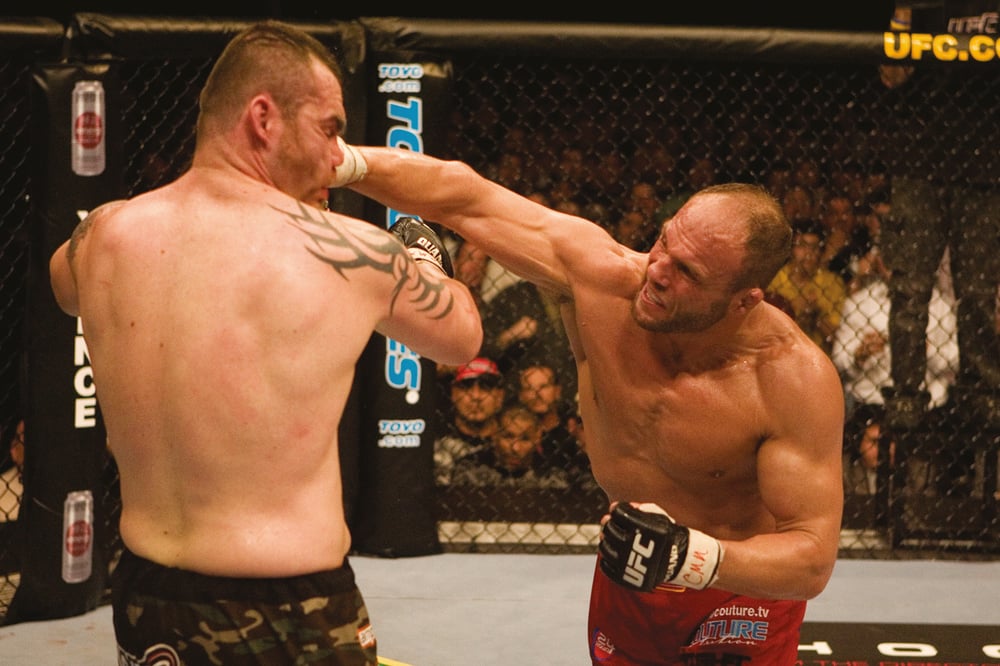
4 Unpredictability
Across the globe, millions pack sporting arenas hoping to see something special. More than any other form of entertainment, watching sport is a gamble. You may see genius; you may be bored to sleep. The irregularity makes sport more gripping than any scripted performance.
In MMA, the unpredictability factor is off the chart. If you were to go to a football match, you would confidently expect two sets of eleven men to try to outscore each other. The parameters are clearly defined.
There are no such limits in MMA. You could be in for a ground struggle, a clinch battle, or a stand up war (or all three). Individual rounds can test the combatants in a range of disciplines. Also, fighters deliberately act against type to confound their opponent’s tactics. Few believed Randy Couture could take the heavyweight title from Tim Sylvia in his comeback fight at UFC 68. No pundit ever imagined he would choose to stand with the ‘Maine-iac’ for long periods and dominate the exchanges.

5 Upsets
Shock results add spice to any sport. In top-level MMA, the number of upsets means that it’s almost more shocking for a favourite to win. For my money, the biggest shock of all came at UFC 69. Georges St Pierre, coming off wins over Sean Sherk, BJ Penn, and Matt Hughes, was a contender for the pound-for-pound number crown. Critics felt his match with TUF 4 winner Matt Serra was a stunt that cheapened the welterweight title they were contesting. Serra punched the living daylights out of the Canadian and left the Octagon with the belt.
The underdogs upset the odds so often that there can be no such thing as a routine fight. The giants get chopped down too much for anyone to plan beyond the next fight. A nightmare for promoters; a bonus for fans. Pride brought Antonio Rogerio Nogueira and Takanori Gomi to Vegas in February 2007 to showcase their stars in America. The pair were spectacularly beaten by Sokoudjou and Nick Diaz respectively.
Cro Cop was the victim of a huge upset when he was KO’d by Kevin Randleman in 2004. He rebuilt his reputation and was snapped up by the UFC to be at the forefront of their European campaign. The inevitable happened. The fearsome Cro Cop was head kicked into oblivion by Gabriel Gonzaga in front of a sold-out crowd in Manchester. The uncertainty keeps the excitement up and the fans happy.
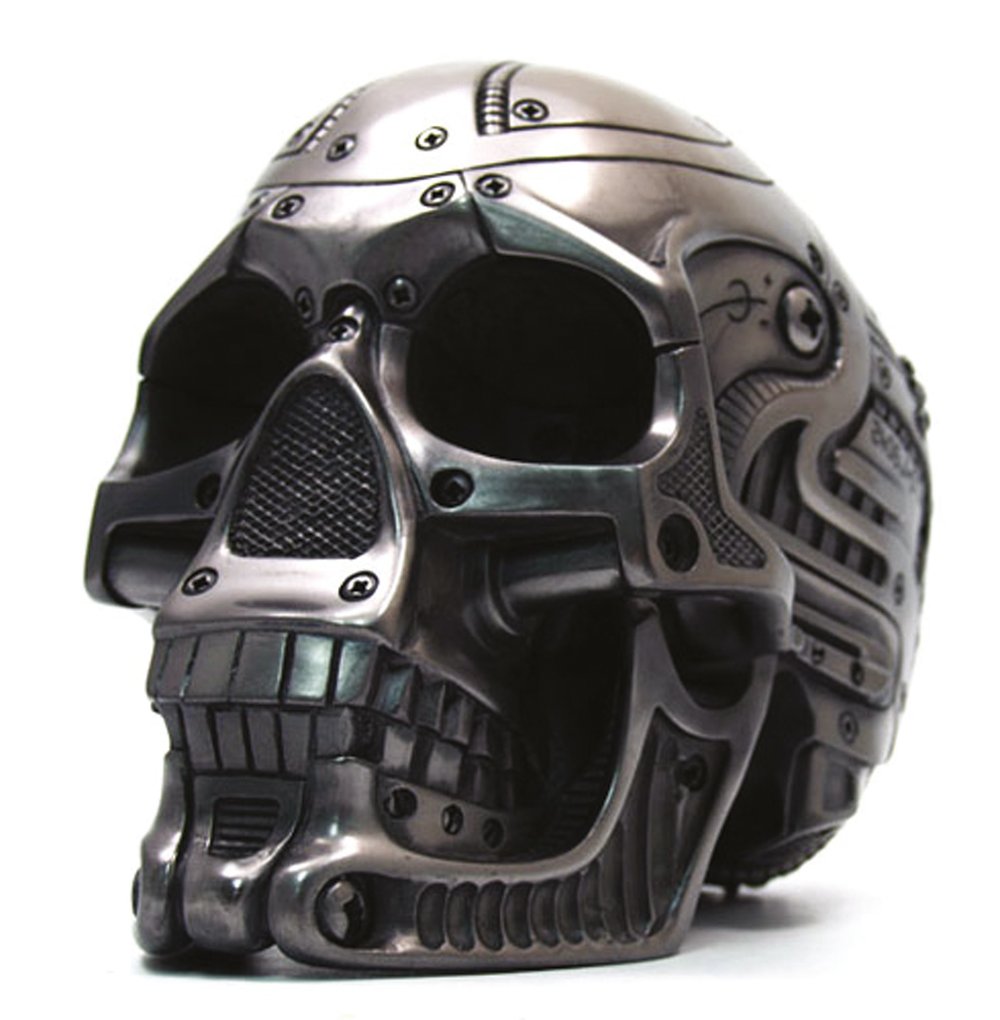
6 Nicknames
Everybody loves a nickname. Good ones, bad ones, and best of all the ones that are so bad they are brilliant. The good handles are the ones that you can tell have come naturally, a chance remark that sticks because it has the ring of truth. You can imagine someone seeing the tenacious style of Matt Serra and dubbing him “The Terror”. After witnessing the explosive power of Paul Daley, it’s natural to think of Semtex. You spot Rich Franklin’s resemblance to Jim Carrey, and he is ‘Ace’ (Ventura) forever.
Anything that sounds contrived fails. The huge pack of ‘Pitbulls’ are trying too hard. The Brazilian habit of giving kids names longer than Welsh railway stations make catchy fight names essential. Shogun, Ninja, Cyborg … Great fighters, dumb names.
The South Americans are forced into the alias game, so their slip-ups can be forgiven. The worst soubriquets are the ones designed to impress. The more thought that has gone into it, the more unintentionally hilarious it is. Ron ‘H20’ Waterman is simply dire. Ditto Tito ‘The Huntington Beach Bad Boy’ Ortiz.
Ken Shamrock is a clear winner in the ‘so bad it’s brilliant’ stakes. The leg-lock lover was a true pioneer of the sport but, in recent times, his fight name has provided fans with more entertainment than his fights. Seeing an old guy getting beaten up is an unpleasant experience. When he describes himself as ‘The World’s Most Dangerous Man’ it at least adds some comedy value.
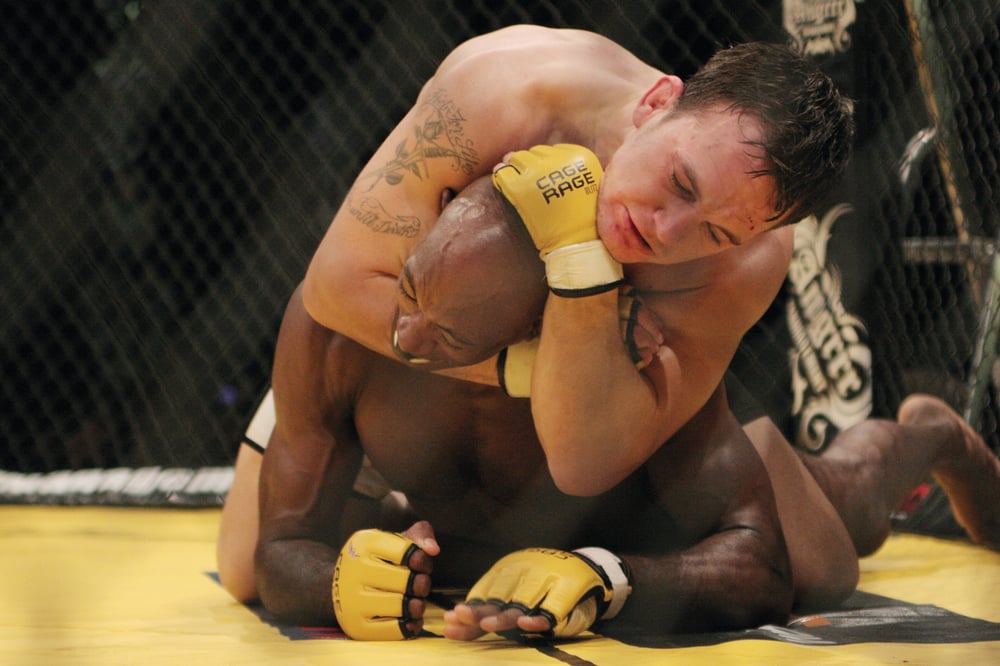
7 Tap outs
Quitting is the worst thing you can do in the eyes of fans. Roberto Duran, Paula Radcliffe, John Sergeant: great careers blighted by one incident of capitulation. The initial success of the early UFCs was not down to the lowest common denominator marketing. Sure, there was an element of bloodlust, but the unique selling point was a skinny kid in a gi felling the big beasts through the appliance of science.
It was proof that fighting is as cerebral as it is physical. The tap out is confirmation of this. You get caught in a hopeless situation and you face up to it. You accept your fate and withdraw from the fray with dignity (and bones) intact.
Some boxing dinosaurs cite the tap as evidence that MMA is soft, because a fighter should never quit. That logic would mean a fight could only end by an opponent being totally disabled – and they call our sport barbaric!
The tap out is the tool that allows fights to advance at maximum intensity, the symbol of honourable surrender, the safety valve that keeps the sport out of the human cock pit.
8 Freak shows
I’ll admit, I love a good freak show. I appreciate the finer points of fighting, but my guilty pleasure is watching unusually big people being put in painful situations.
When Fedor had worked his way through every significant human heavyweight, he moved on to the super humans. His match with the 7’2” Hong Man Choi produced some of the most memorable images in fight sport history. Weird, but in a good way.
Japan is regarded as the spiritual home of the freak show, but promoters around the world quickly latched on to the idea that audiences would pay good money to watch unconventional matchups. London-based Cage Rage became market leaders in the genre, enticing UFC veterans Kimo Leopoldo and Tank Abbott over the pond. The latter was a late replacement for the freak-tastic Bob Sapp. Former boxers Julius Francis and Butterbean also entered the Wembley cage.
The ‘Bean’ actually won on one of his three visits. Another time when the freaks bit back was Cage Rage 24. That event answered the question absolutely no one was asking, ‘who would win in a fight between a kickboxer and a 330lb Polish sumo wrestler?’ In his sole MMA fight to date, Robert Paczkow put his body weight on his opponent until he could take no more.
See? They’re not freak shows, they are highly technical experiments in combat. Honest!
9 Ground ‘n pound
The technique that MMA gave to the world. Throughout history street fighters (and presumably dirt road fighters and cave fighters before them) have done it, but nobody had given it a name before Mark Coleman came along. ‘The Hammer’ spelled out his strategy: take the man to the ground and pound the shit out of him. That’s much harder than it sounds.
Getting anyone down and keeping them in a position where you can land meaningful punches is tricky. If you’re dealing with a skilled submission merchant in peak condition, the difficulty factor increases tenfold. Coleman showed the way and an army of imitators followed. Instead of frenzied attacks, a more refined approach prevailed. Fighters became masters of controlling a body on the canvas, working for the correct posture then delivering powerful elbows and punches with pinpoint accuracy. Pounding the shit out of him indeed, but so much more as well – a revolution in ground work. If the health and safety police came to power tomorrow and erased all vestiges of the MMA game, ground ‘n pound would live on. It is MMA’s gift to human advancement.
10 Knockouts
The ultimate finish for the ultimate sport, a knockout can come at any time. You’re two rounds up, cruising to victory in the last minute and bang, you’re out. The slightest mistake could put you on the receiving end of instant justice. Hero to zero in a split second.
The potential for a KO means that fights are never over till they’re over. You need to work for a submission, yet even the most overmatched fighter can be lucky and get out of a bad spot with a KO.
The special breed of fighter who can put out the lights on a regular basis is the hottest commodity on the market. It’s no coincidence that the rise of the UFC coincided with the golden age of Chuck Liddell. As the bodies fell at the feet of the ‘Iceman’, the audience figures went through the roof.
Seeing a tough, conditioned fighter turned to jelly with a single blow is a spectacular sight. The ability to make it happen is clearly even more addictive. Liddell became hooked on the power. Each time he went out, he’d leave the rest of his game at home and just pack the big right hand in his tool box. Put him in with a hungry hitter like Rashad and it’s Chuck’s turn to take a nap at work. Chuck’s fights will sell in the future, because you can promise the ending the punters love: someone’s going to get knocked out.

11 Fair matchmaking
‘Records are for DJs’; the phrase used to sum up the ‘fight anybody’ attitude of MMA. In boxing the unbeaten record is sacred. Prospects are matched against journeymen to pad out their records. If you want to get anywhere near title shots and TV, you need to have a big shiny 0 in your loss column. As a result, most fans stay in the bar for predictable undercard bouts, only taking their seats for the main event.
MMA fans see a perfect record as proof a fighter hasn’t been tested yet. In the UFC, there are no easy fights. Arenas fill early as every fight means something. If you’re in the UFC you’re either fighting to climb the ladder or fighting to survive in the big show.
Fans turn up for a show full of competitive fights, not a star turn supported by ‘TBC’ and ‘A.N. Other’. EliteXC was staffed by boxing people who did not understand the MMA psyche. They set about building their promotion around the cult of Kimbo Slice, believing fans didn’t care about the level of opposition. As soon as a late pull-out forced Kimbo into the cage against a live opponent he was destroyed and the promotion soon followed.
HL Mencken famously said, “Nobody ever went broke underestimating the intelligence of the American public”. Tell that to Elite XC. MMA fans will not tolerate dodgy matchmaking. Any promoter who tries to con us is going down.
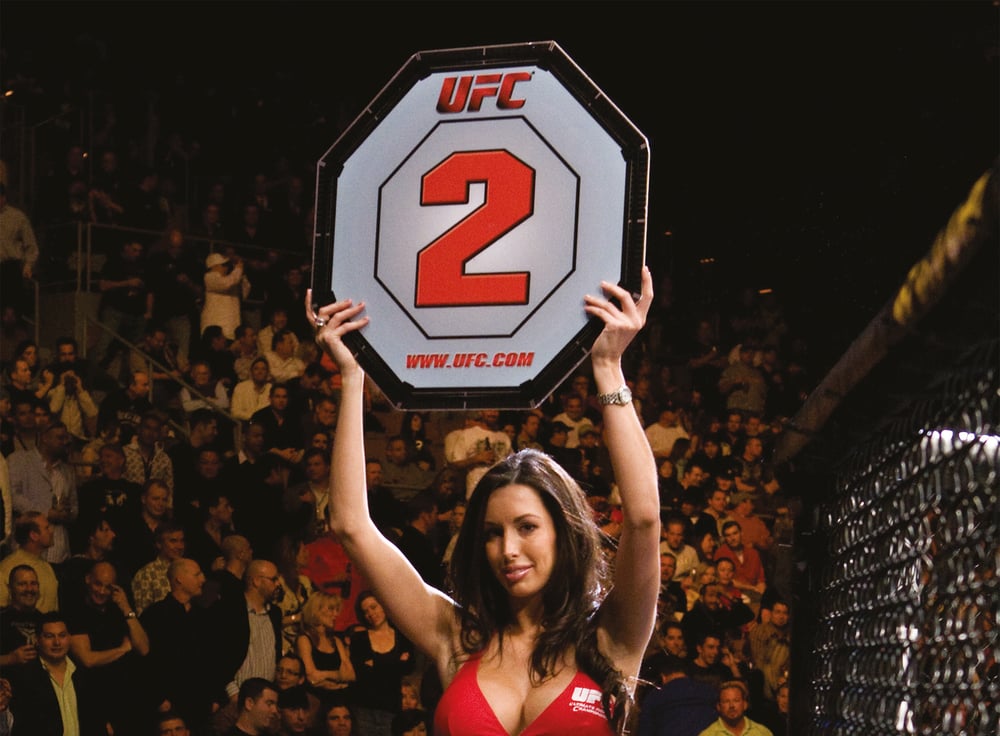
12 Purity
The Ancient Greeks invented everything that is any good. Drama, democracy, triangles, and organised sport. They loved proper sports: running, throwing stuff, and, above all others, pankration, the art of no holds barred fighting.
All the games that have followed have been metaphors for violence. Teams invade each other’s space pretending to be at war. Fighting is a sport you don’t play at, so even the lowliest scrap means something. If you walk through the park and see two guys playing tennis, you hardly notice. If they drop the racquets and start fighting, you won’t be able to take your eyes off them.
MMA is the closest you can get to a real fight with rules designed to keep fighters safe. After being under attack for so long, some people are still too apologetic when talking about MMA.
Fighting is the most natural thing in the world and it can be fun. This may seem like a misnomer, but if more people trained in the fighting arts the world would be a better place. Fighting is the purest of sports; a sport where the pain is real; a sport where you get punished for real; a sport where victory is sweeter than in any other: the only true sport.










